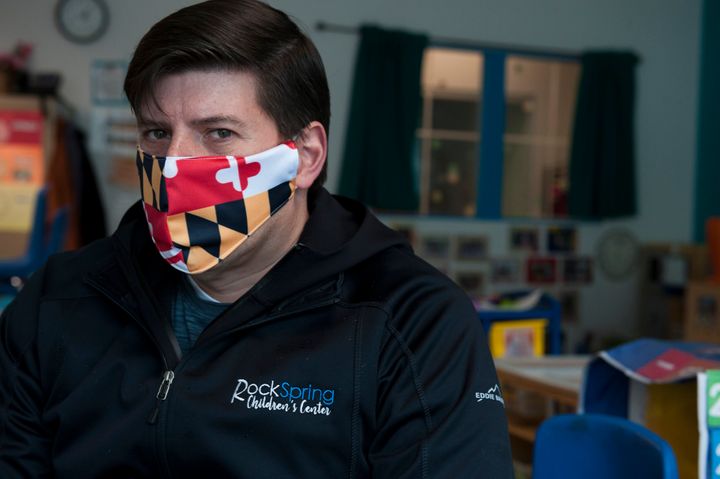[ad_1]
Disney World opened its doors to the public last week. Good news, maybe, for moneyed parents looking to entertain their children for a little while.
But for parents who need actual, consistent and secure places to bring their children, the news is far more grim. The child care centers that provide crucial support to workers with preschool-aged children are in trouble.
Without additional public funding, 40% of the child care centers in the U.S. say they’ll be forced to permanently shutter because of the financial pressures of the coronavirus pandemic, according to a survey released Monday by the National Association for the Education of Young Children.
The survey also found that half of the child care centers operated by minority business owners are at risk of closing permanently, yet another sign of how this crisis has been disproportionately hard on people of color.
Couple this with the uncertainty that surrounds the reopening of the nation’s K-12 schools and what you get is: a lot of parents who won’t be able to get back to work ― particularly women who are typically saddled with primary caretaking responsibilities or who are single parents. In a recent survey from the University of Oregon, 47% of parents didn’t know if they would be able to return to work because they didn’t have appropriate child care.
This is devastating news for so many parents ― especially those who are losing out on income amid an economic crisis that is causing some families to go without food. It’s terrible for working women. It’s bad for companies who want employees back to work.
It’s also a particularly bleak situation for children, said Phillip Fisher, who is leading a research project at the University of Oregon examining the effects of the pandemic on families with young children.
There’s a vast amount of important development that happens to children during the early years of life, he noted. And when children are exposed to chronic, toxic stress ― as when their parents are suffering from material, financial hardships ― it leads to fundamental changes in the way they develop. The consequences are long-reaching.
Fisher said circumstances are going to get worse, as some of the policies put in place to help families through the pandemic’s initial stages are set to expire, including a temporary moratorium on evictions and supplemental unemployment insurance. Both policies have been a valuable backstop for working parents with kids at home.
Many people are going to have to go back to work or risk losing their homes. And that means “some kids are just going to be left home alone or with older siblings,” an additional stressor for parents and children, Fisher said.
The reality that “we’re not doing enough to buffer young children from the effects of stress right now is going to have consequences that play out over decades,” he said.
“This is a situation that hurts everyone in this country,” added Kristin Rowe-Finkbeiner, the CEO of MomsRising, a nonprofit advocacy group. “The paid and unpaid work of raising children, of educating children, is often the invisible backdrop to what people think of as our regular economic activity in America. Now that we’re in a pandemic, we see that this work is at the core of our economy, our communities and our country.”
Many centers are holding on ― about three-quarters of them in the U.S. are now open, according to the survey by the National Association for the Education of Young Children. But they’re dealing with reduced enrollment, as parents grapple with sending their children back into a group setting or have lost jobs that provided them the money to pay for such care.
The survey was conducted in June and 5,344 people working in center-based or in-home child care facilities responded.
One Center Reaches Its Breaking Point
After 30 years of working at and eventually owning a small child-care center in Worcester, Massachusetts, Bibi Nageer closed up shop in mid-June.
She tried to keep the business afloat after being forced to shut down when the pandemic first hit, but had little help. Back then, Nageer applied for a loan through the federal government’s small business rescue program. But because she wasn’t a regular client of local banks, she got pushed to the back of the line, she said. And, like many other minority business owners, ultimately never got a loan.
Nageer laid off her employees, but kept up with the overhead on the building ―paying utilities and rent. With no tuition fees coming in from parents, it was a struggle. And she reached a breaking point after hearing from many parents who weren’t sure when they’d start sending their kids back. Meanwhile, the guidance on how to safely operate kept changing, she said. And in the end, it was all too much.
It was a difficult decision to make, said Nageer, who started out at the center as a worker before buying the business in 2009. The work, she said, was never about the money.
“It’s a field that although we grow minds, our return takes a long time” to show itself in the benefits children gained from the care, she said. And, she added, it doesn’t seem to her like that’s much appreciated by government officials at all levels in the way they support or make decisions about child care operators.
Funding Is Running Out
It didn’t have to be this way. Child care providers and advocates have been forcefully pushing for help in keeping these businesses going for the entirety of this crisis. But to little avail. Congress put $3.5 billion in funding toward child care in the CARES Act passed in March. That helped some providers, others were able to tap the small business loan program created in CARES.
But since then proposals seeking more funding have gone nowhere. And that initial bit of funding is running out.
Even the most well-off providers are on the edge.

“It’s scary,” said Shaun Rose, who runs a center in Bethesda, Maryland, an affluent Washington suburb.
Rose got a small business loan in March when the center closed during the shutdown, but that money is gone, he said. Now that it’s open again, the business is losing about $100,000 a month because of reduced enrollment.
New regulations for how many children can be in a classroom, combined with reduced demand, has left Rose’s center operating about 40% its normal capacity. “That’s unsustainable; we need to be at 95% to break even. We need the place to be full and it’s not,” he said.
Little Care For The Caregivers
None of this should come as a surprise. In the U.S., policymakers have never seemed to care all that much about caregiving: Whether you are paid to look after children, or if you do it out of love, you’ll find little support.
The U.S. is one of the only countries in the world that don’t require employers to provide paid time off to new parents. Child care workers receive poverty-level wages. Women in the U.S. often see their wages fall after becoming mothers, in part because of long-standing discrimination against women in the workplace.
But the coronavirus pandemic has turned this long-simmering failure into what’s increasingly shaping up to be a full-blown catastrophe.
Child care advocates say it is crucial to get providers more money in the next stimulus bill; others, like Fisher, said extending supplemental unemployment benefits and keeping people from getting evicted is even more important.
“We’re finding if people lose the replacement income they had, and there’s no longer an ability to prevent landlords from evicting people, we’re going to have large numbers of homeless families,” he said.
A HuffPost Guide To Coronavirus
Calling all HuffPost superfans!
Sign up for membership to become a founding member and help shape HuffPost’s next chapter
[ad_2]
Source link

